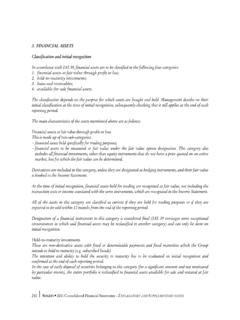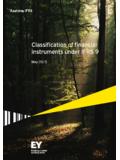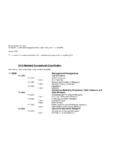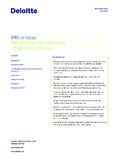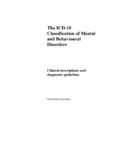Transcription of Classification of Elective Mutism - Torey Hayden
1 Classification of Elective Mutism Torey L. Hayden Abstract. In this study of 68 children displaying Elective Mutism , four types of Mutism are distinguished: (a) symbiotic Mutism , characterized by a symbiotic relationship with a caretaker and a submissive but manipulative relationship with others; (b) speech phobic Mutism , characterized by fear of hearing one s own voice and use of ritualistic behaviors; (c) reactive Mutism , characterized by withdrawal and depression which apparently resulted from trauma and (d) passive-aggressive Mutism , characterized by hostile use of silence as a weapon. The prevalence of physical and sexual child abuse in all four groups was high. The Classification of Elective Mutism into subgroups is clinically relevant for a better understanding of the etiology and for devising appropriate intervention.
2 Journal of the American Academy of Child Psychiatry, 19:118 133,1980 Elective Mutism , a term first employed by Trainer (1934), has been used traditionally to describe those children who refuse to speak to all but a small number of intimates. This definition excludes all other nonpsychogenic forms of Mutism , including hearing loss, aphasia, schizophrenia, and autism. Although the behavior is a perplexing problem to the families of preschool children, it becomes a seemingly insurmountable problem when the children enter the educational system. Consequently, the Elective mutes become candidates for grade retention, special class placement, and frequently residential institutionalization, mounting failure on top of an already complex psychological problem.
3 LITERATURE REVIEW Despite a considerable literature devoted to Elective Mutism since its identification in 1877 by Kussmaul, no large-scale studies of this specific problem have been undertaken. Hence etiology, dynamics, treatment, and even incidence rates remain uncertain. Several excellent exhaustive reviews of the literature currently exist, Browne et al. (1963), Elson et al. (1965), and Halpern et al. (1971) being among the best. However, detailed systematic observation of a number of cases is lacking. Parker et al. (1960) present the most comprehensive American study with 27 youngsters in the Tacoma school system. Wright (1968) studied 24 cases. Spieler (1941) reviewed 50 European cases described in the literature but did not see these children himself.
4 The rest of the literature deals with a small number of cases, usually 6 or fewer, and very often only a single case. Elective Mutism requires further attention because of the difficulty in creating a consistent profile of behavior (Chetnik, 1973; Misch, 1952; Reed, 1963; Waterink and Vedder, 1936; Weber, 1950); its resistance to treatment (Elson et al., 1965; Mora et al., 1962; Pustrom and Speers, 1964); the ungainly amount of time generally required (Chetnik, 1973; Mora et al., 1962; Nolan and Pence, 1970; Sines, 1967; Wassing, 1973); and the great amount of environmental restructuring necessary to produce change (Amman, 1958; Elson et al., 1965; Pangalila-Ratulangie, 1959; Reid et al., 1967; Sines, 1967; Wassing, 1973).
5 The study reported here was undertaken to establish the parameters of Elective Mutism by investigating a large sample so that the underlying disturbance might be seen more clearly. METHODS Population Criteria for inclusion in the study were: (1) the child must have displayed normal speech and speech patterning in at least one previous circumstance for a period of 6 months or more; (2) the child must have displayed totally mute behavior in at least one major setting for a period of 8 weeks; (3) the child must have an IQ of 70 or more as substantiated by the WISC or Stanford-Binet; (4) the child must have been free of the diagnosis of psychosis, including autism. These criteria were arbitrarily set to assure inclusion of only those children who displayed Elective , psychogenic Mutism .
6 Along with the 68 children accepted in the study, 270 were rejected for possible contaminating factors. Of these 270 children excluded from the study, 23 (all having speech impairment or retardation) displayed behaviors characteristic of the 68 identified Elective mutes and responded to treatment in a manner equivalent to the 68, thus emphasizing the arbitrary nature of some of the inclusion criteria. Table I Demography of Sample Population Girls Boys* Age range 3 9 to 5 6 3 0 6 0 to 7 11 20 7
7 8 0 to 9 11 17 1 10 0 to 11 11 12 1 12 0 to 14 4 4 1 IQ range 70 to 84 9 3 85 to99 15 4 100 to114 10 2 115 to130 15 3 131+ 7 0 Race Black 2 1 Mexican-American 3 1 Native-American 3
8 2 White 48 8 Income ** high ($5,573 or more per person) 15 3 middle ($3,829) 23 6 low ($2,396 or less) 18 4 Location Kansas 4 0 Minnesota 36 8 Montana 3 1 Oregon 5 0 Washington 8
9 3 Community Size ** urban (over 50,000) 14 2 suburban / small town (2,500 to 50,000) 30 6 rural (less than 2,500) 11 4 * The ratio of girls to boys in this segment of the study was approximately 6:1. However, the continued study with 122 children showed it to be closer to two girls to one boy (2:1). ** As established by the Bureau of Labor Statistics, Dept. of Labor, 1976. ** As established by the Bureau of Census, 1976. Procedures Data on the children were compiled from direct observation, video-and audiotapes, written reports, questionnaires, and other pertinent written material such as school cumulative folders and psychological, psychiatric, and pediatric reports.
10 The children, who were seen sequentially over a 7-year period, were all referred by school districts. Any later referrals were initiated by mental health clinics and psychiatric facilities; however, almost all observations and interactions were done in the school setting, since there the problem was most acute. Consequently, schools always remained intimately involved and were requested to activate an outside referral from parents or clinical settings by submitting their own referral. The districts also bore primary financial responsibility in 57 (84%) cases. I functioned at first as a special education teacher within the district, and later as a professional affiliated with local universities.
